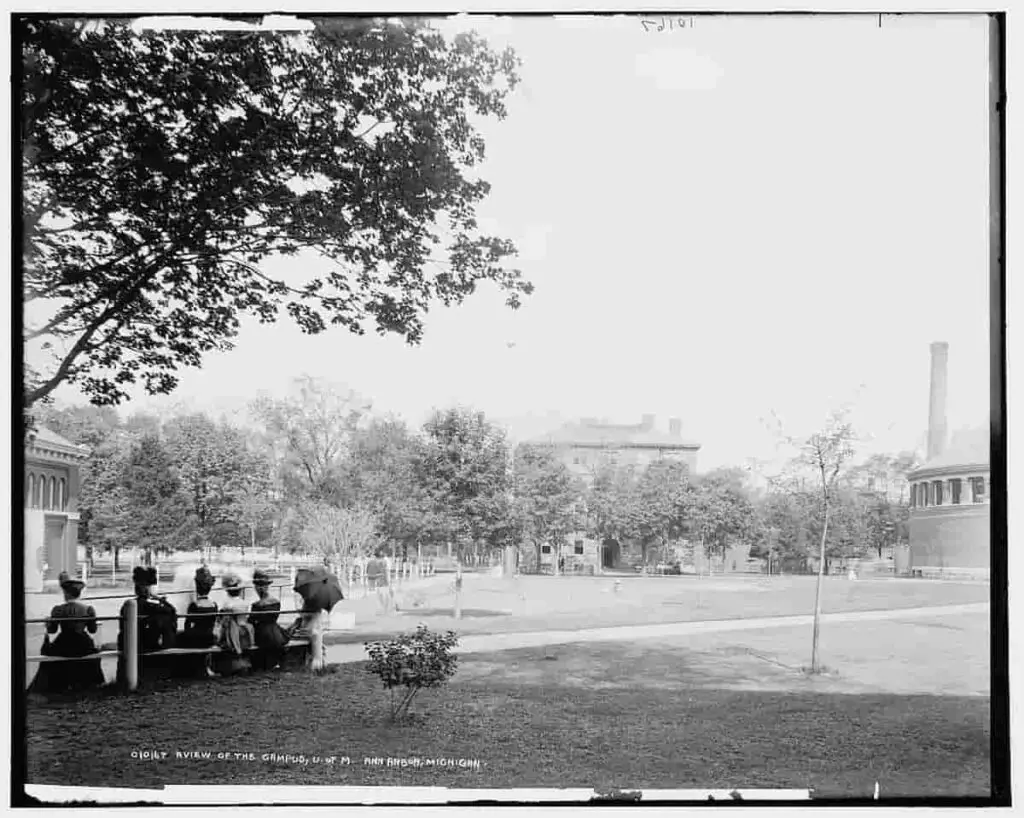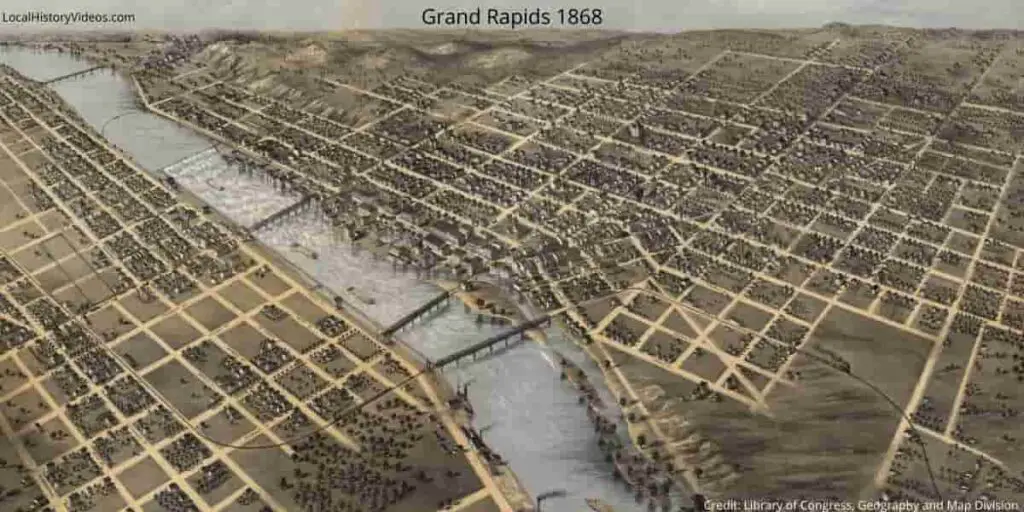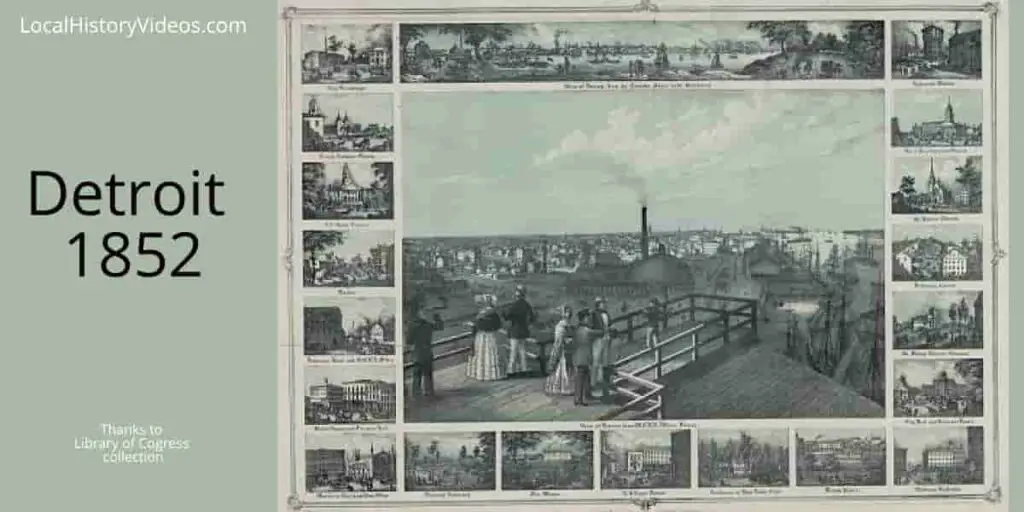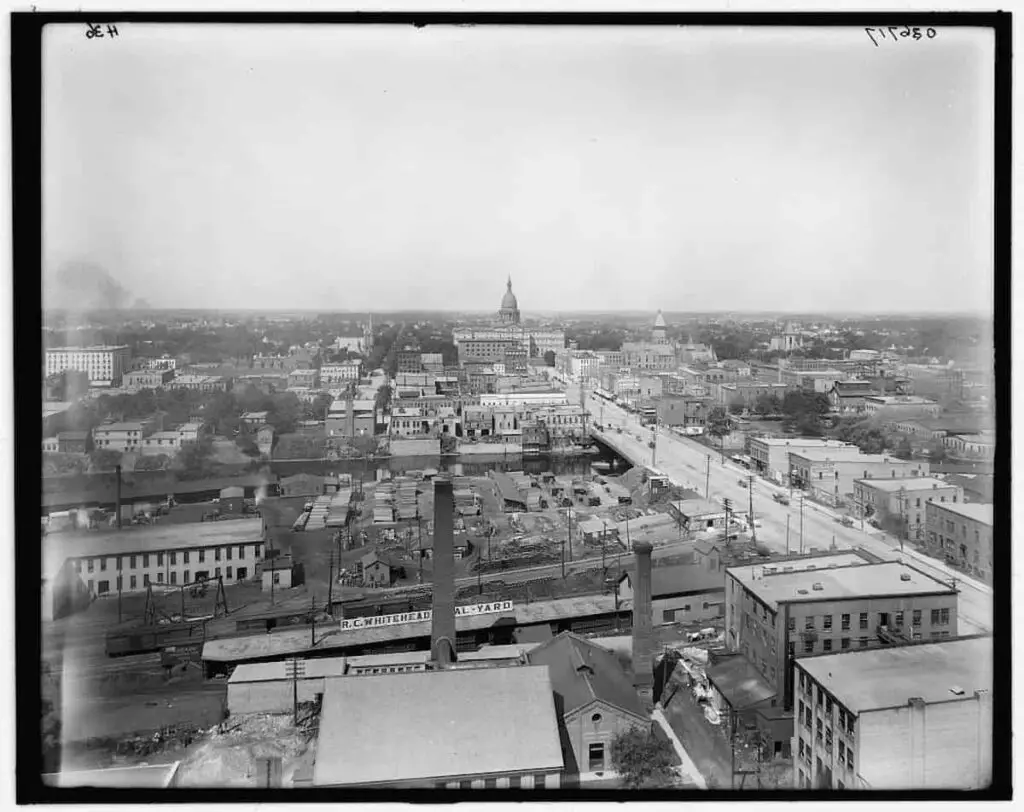Glimpse history through fascinating old images of Detroit, Michigan.
Underground Railroad
From the early 1800s to 1865, people of all backgrounds participating in the Underground Railroad (called ‘conductors’ or ‘stockholders’) sheltered fleeing slaves in their homes and other hiding places, to great personal risk. The slaves would move from town to town, usually at night, making their way from plantations in the American South to places they could live in freedom.
Under the Fugutive Slave Act of 1850, if a fleeing slave was captured anywhere in the United States of America, they had to be returned to their accusing owner without right to testimony or a jury , even if they had reached the safety of a state which did not practice slavery. Officials who did not arrest someone allegedly escaping from slavery became liable to a hefty fine of $1,000. Any person aiding a fugitive by providing food or shelter was subject to six months’ imprisonment and a $1,000 fine.
So Canada became the new goal of those seeking freedom. Detorit, codenamed ‘Midnight’, was the final stop on the Underground Railroad before reaching Canada.
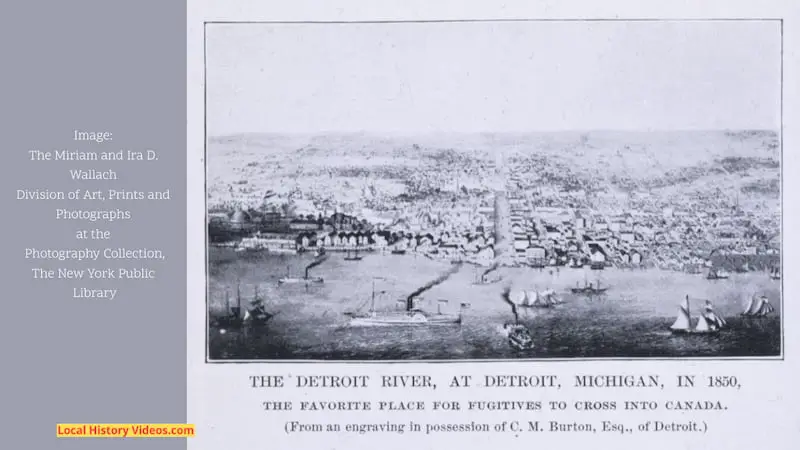
The Michigan Soldiers’ and Sailors’ Monument
During the American Civil War of 1861-1865, injuries sustained in combat killed 4,448 soldiers from Michigan. More than 10,000 more died from the deadly diseases which swept through the over crowded army camps.
Meanwhile, 598 Michigan men enlisted in the Navy. Accidents and rough seas were a constant risk, and many U.S. ships found themselves at battle with their enemy even close to European shores. For example, thirty-year-old Ordinary Seaman William Gowin, from Detroit, was fatally injured when his ship the USS Kearsarge sank the USS Alabama off the coast off Cherbourg, and consequently was laid to rest in France.
So almost as soon as the Civil War was at an end, Governor Austin Blaire established a fund to rise money for a monument commemorating the state’s lost soliders and sailors. Randolph Rogers was commissioned to design the moment.
Generals George Armstrong Custer, Philip H. Sheridan and Ambrose E. Burnside attended the unveiling on April 9, 1872.
Located at the intersection of Woodward Avenue, Michigan Avenue, Monroe Street, Fort Street, and Cadillac Square, the Michigan Soldiers’ and Sailors’ Monument was repositioned on Campus Maritus Park and given a re-dedication ceremony in 2005.
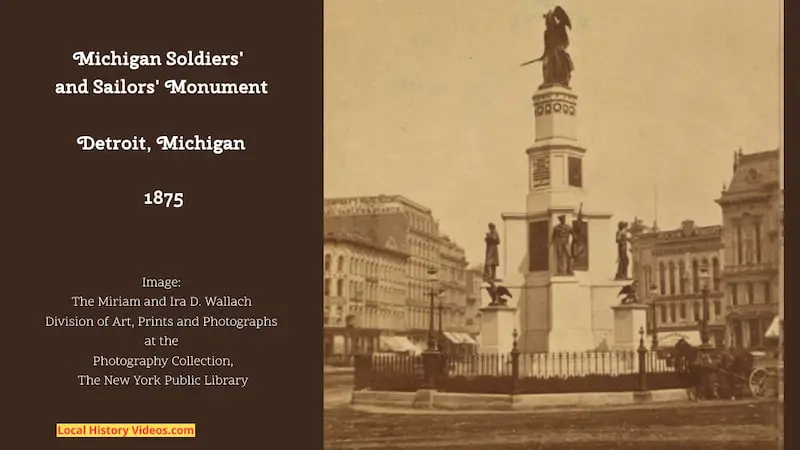
Woodward Avenue
The Saginaw Trail was an established transportation route by 1701, linking the Detroit area to Saginaw along what became the wide boulevard of Woodward Avenue in 1805.
It was named by Augustus Woodward, judge, friend of President Thomas Jefferson, colonel in the territorial militia, and president of one of Detroit’s first banks. He denied naming Woodward Avenue after himself, claiming it was his choice because the route ran towards the woods!
Woodward Avenue had oak planks laid along the road in 1848, but with tolls points charging one cent per mile for vehicles and two cents per mile for a herd of cattle. The last toll point was removed in 1908.
On March 23, 1896, Charles Brady King drove a car down Woodward Avenue, the first person ever to do so. A few weeks later, Henry Ford drove his first car in the city.
Detroit’s second skyscraper, the Majestic Building, was a 14 storey building opened on Woodward Avenue in 1896 as a Mabley and Company department store. It was demolished in 1962, replaced with the First Federal Building.
Detroit’s Thanksgiving Parade along Woodward Avenue started in 1924, making it the second oldest in the United States.
Streetcars connected Woodward Avenue to other parts of the city from 1863 until 1956, when a parade was held to mark the end of this service.
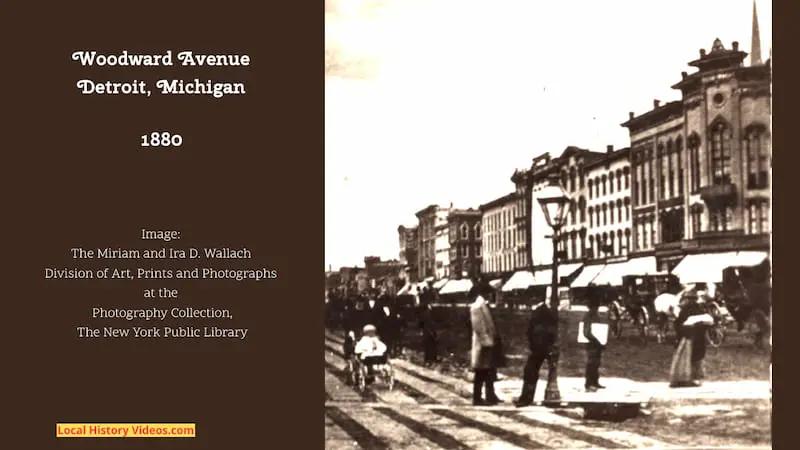
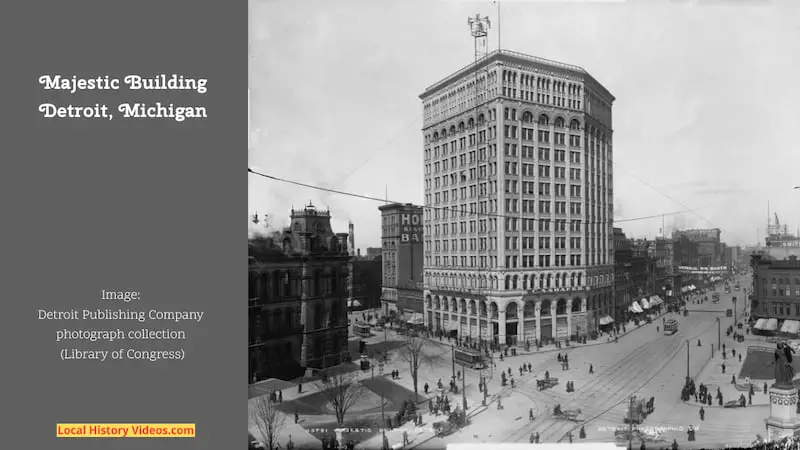
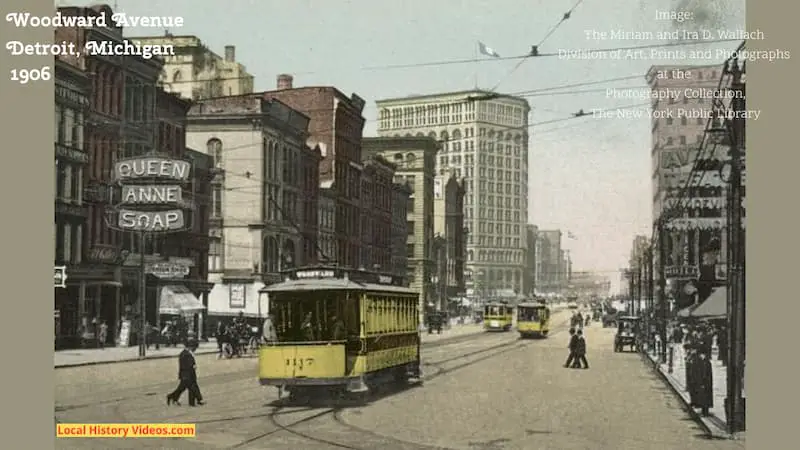
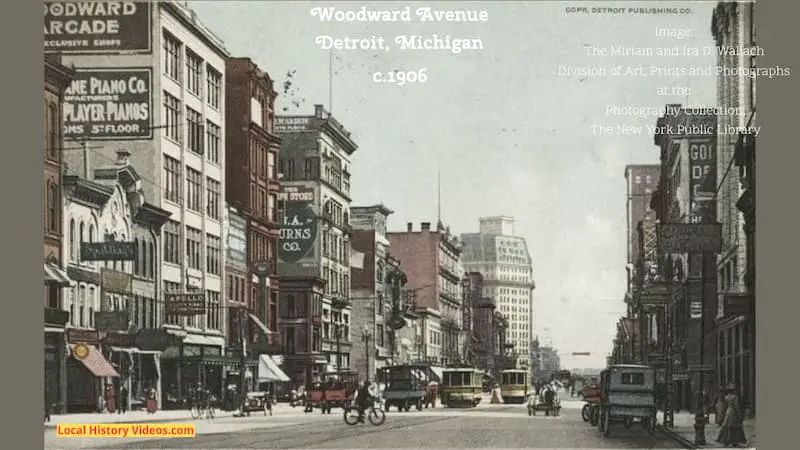
Grand Circus Park
The city established Grand Circus Park in 1850, part of Augustus Woodward’s plans for the rebuilding of Detroit following the catastrophic fire of 1805.
The planned full circle of park was never achieved, because rising land values made the property owners north of Adams Street reluctant to sell.
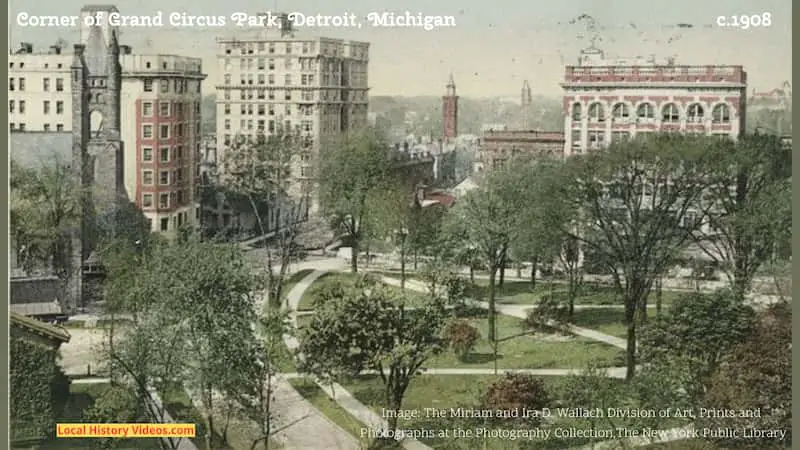
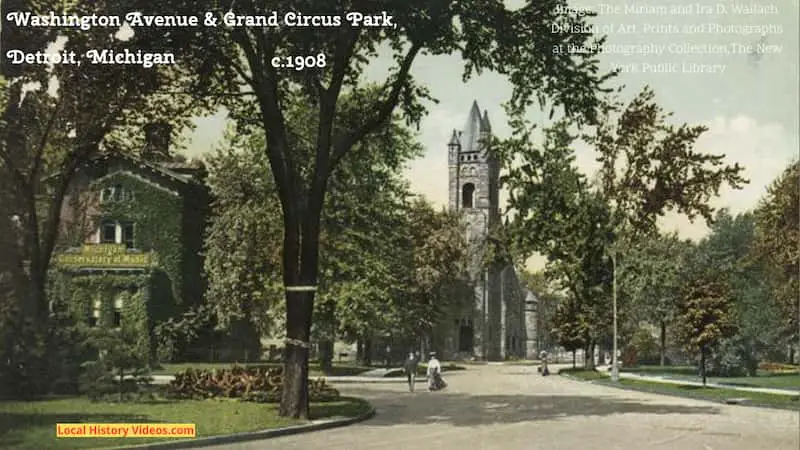
Griswold Street
The Hammond Building, Detroit’s first skyscraper, was built on the corner of Griswold Street and West Fort Street in 1889. Construction of the 10 storey office building was planned by refrigerated meat railcar enterpreneur George H. Hammond who died at the age of 48, and completed by his widow Ellen Barry Hammond.
A dispute about quality of workmanship over the work of the plasterers, steam fitters and carpenters broke out between Ellen Hammond, and the architect and chief contractor, George H. Edbrooke. With 15% of the fee witheld, Edbrooke was unable to pay his subcontractors, and ultimately took his own life in his New York office in 1894.
The Hammond Building was demolished in 1956. The Headquarters for the National Bank of Detroit was built on the site, at a cost of $20 million, and opened on September 14, 1959.
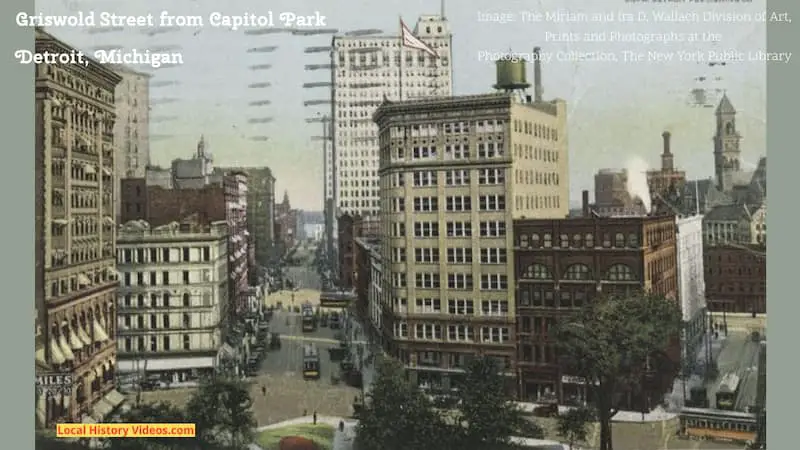
Detroit Riverfront
Pictures taken across the river towards Detroit at the turn of the 20th century captured a high rise and industrious city which would have surprised and fascinated people around the world.
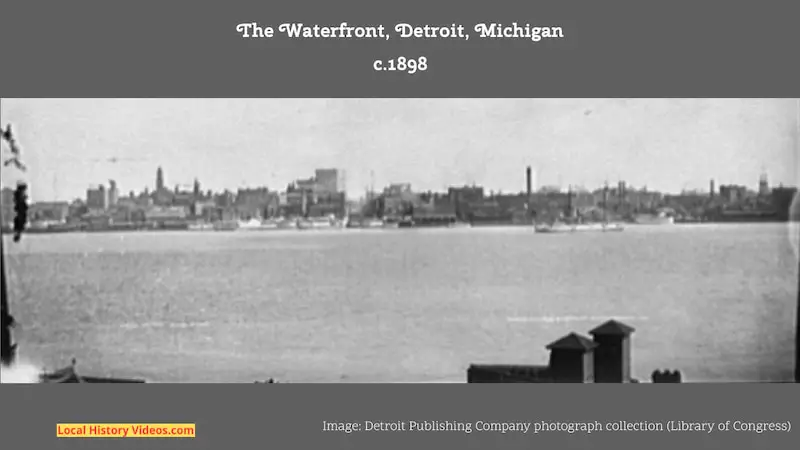
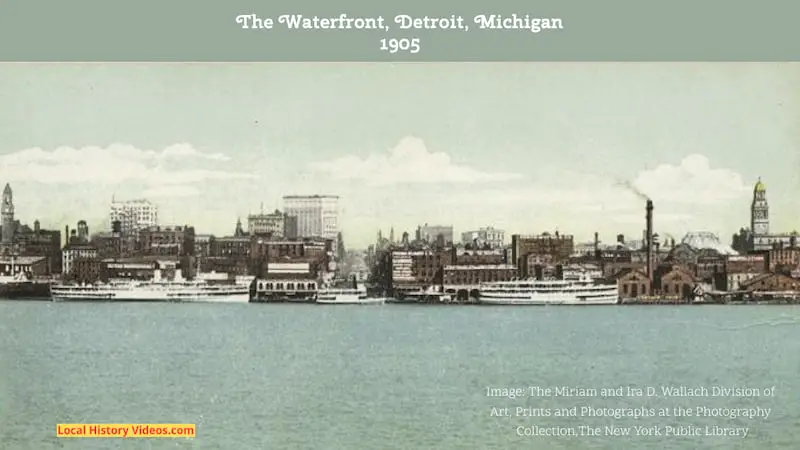
Detroit 1890 – 1910
These old photos of Detroit were taken between 1890 and 1910.
The roads look very empty, even downtown. The University Club may have had a line of parked cars outside in 1905, but in 1910 it’s horses and carts traveling past the Wayne County Building.
Each image is labelled with the location and approximate date, so you always know when and where you are.
Old photos of Detroit (1890-1910) – oldstuff4all on YouTube
Detroit Fire 1927
The opening title of this newsreel states:
“Spectacular blaze destoys auto plant…Biggest fire in Detroit’s history razes motor-body factory with”…(unreadable)
The Briggs Auto Body Plant fire of April 1927 left at least two workers dead and 24 injured, some very seriously. Men had to flee for their lives as the walls were blown out and fire quickly took hold of the five storey building. Very little was left at the end, and the estimated financial loss was $3 million.
1927 fire in Detroit (1927) – British Pathé on YouTube
Factory Strikers 1937
1937 saw about 100 strikes break out in Detroit, from car factory workers to the ladies at Woolworths.
In this silent, black and white newsreel, a large number of male workers walk about outside their factory, which made cars and tractors.
Detroit (1937) – British Pathé on YouTube
Factory Arrests 1937
In this silent newsreel from 1937, a group of policemen break into a Detroit factory, Newton Packing Co, the “Home of Homestead Products”. Men have been watching this from the rooftop.
Then both men and women – one smiling, dressed in furs, others hiding their faces from the camera – are put into the police cars, which drive off in a long procession.
Michigan (1937) – British Pathé on YouTube
Detroit in 1980
This promotional film about Detroit shows the streets, landmarks, and activities of the city in 1980.
There are quite a few closeups of people at work and leisure, as well as some good aerial shots.
Where Else But Detroit (c. 1980) – Detroit Historical Society on YouTube


